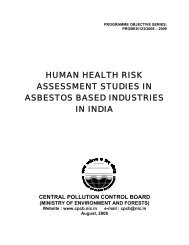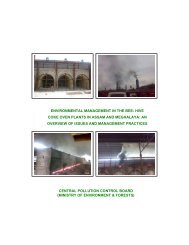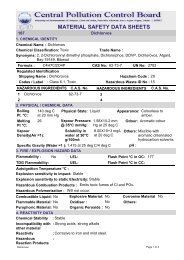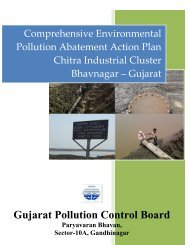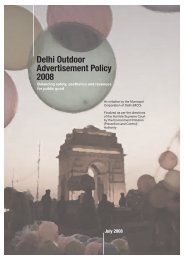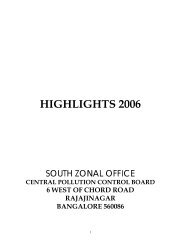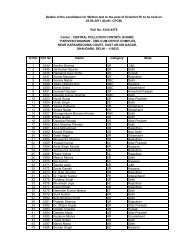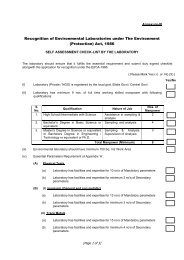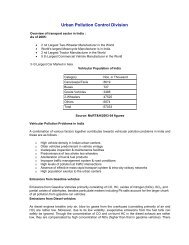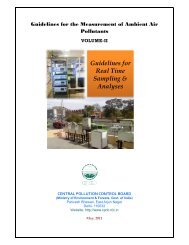Q ST QUA TAT ALIT US O TY IN OF W N IN WA NDIA ATER A- 2 R ...
Q ST QUA TAT ALIT US O TY IN OF W N IN WA NDIA ATER A- 2 R ...
Q ST QUA TAT ALIT US O TY IN OF W N IN WA NDIA ATER A- 2 R ...
You also want an ePaper? Increase the reach of your titles
YUMPU automatically turns print PDFs into web optimized ePapers that Google loves.
The availability of water in River Yamuna is greatly varied with time and space.Precipitation is confined to only three months in a year and varies greatly. Most ofthe water flows in the Yamuna (nearly 80%) in monsoon period (July, August andSeptember) only. Whatever water flows in non-monsoon period (October to June)is extensively used for irrigation and drinking leaving very little or no water in theriver to flow.It is observed that about 500 km long stretch of the river is in bad shape, havingwater quality, most of the time, below desired level for "designated best use". Inthe dry season four distinct gradients of pollutional load can be discerned in theriver stretch between Wazirabad and Etawah. The stretch between Wazirabad andOkhla is the most heavily polluted one, carrying the massive input of wastewaterfrom Delhi. This input has sets off a progressive series of chemical and biologicalevents in the D/s water. This stretch is characterised by high bacterial population,cloudy appearance high BOD and strong disagreeable odour - all indicatinggeneral depletion of oxygen. Masses of gaseous sludge rising from the bottom areoften noticed floating near the surface of the water. During monsoon due to floodthe sludge deposited in this stretch is flushed and stay in suspension causes rise inoxygen uptake in the D/s. This causes heavy fish mortality every year during firstflushing after onset of monsoon.Though there are number of bathing "Ghats along the river in Delhi stretch, thequality of water is far below the bathing standards. Even in this short stretch,remarkable purification takes place due to high temperature and long retentiontime in this stretch due to the two barrages one at Okhla and another at ITO(nearly 10 km U/s of Okhla Barrage). The ITO Barrage is used divert the Yamunawater for cooling purpose of the two Thermal Power Plants located near ITO. Inthe stretch between Okhla and Agra the same assimilative capacity can beobserved after the sewage input at Okhla, Mathura and Agra. After a fewkilometers the repeated additions of sewage are mainly noticeable by a higherstate of eutrophication leading to the formation of algal mats in the River.Excessive algal can cause problems associated with the oxygen balance in thewater (daytime super saturation and nighttime oxygen depletion). The waterquality from DO, BOD, and bacterial point of view is not fit for designated bestuses of this stretch. The Agra Water Works is drawing its raw water from thisonly.The stretch from Agra to the confluence with the River Chambal at Etawah ischaracterized by self- purification processes of the Agra effluents. The confluencewith relatively clean Chambal River is of great value in diluting the pollution loadof River Yamuna before it joins the Ganga at Allahabad.67



